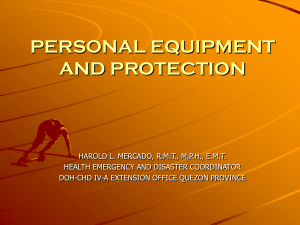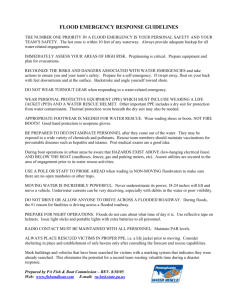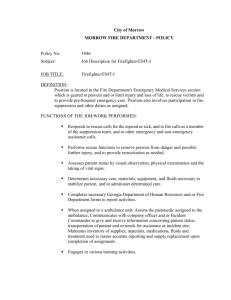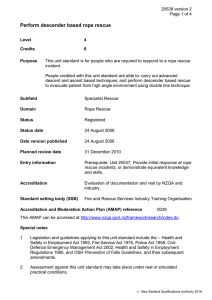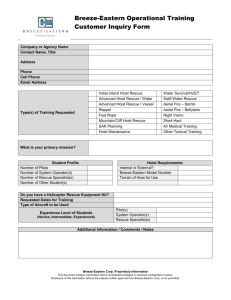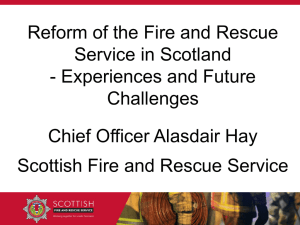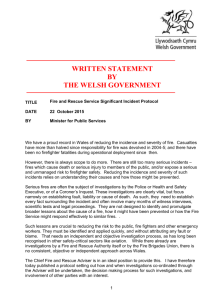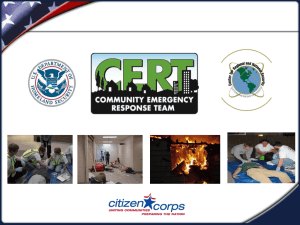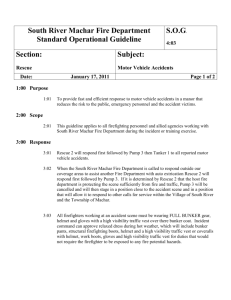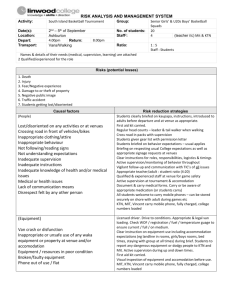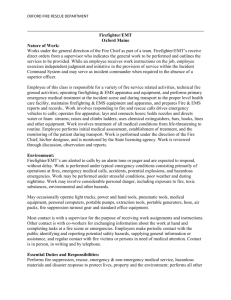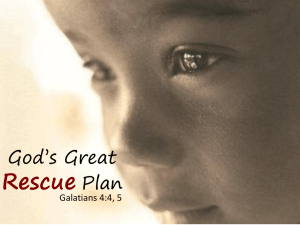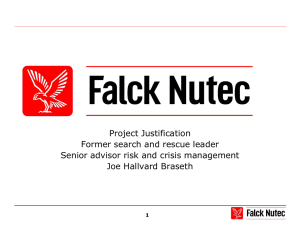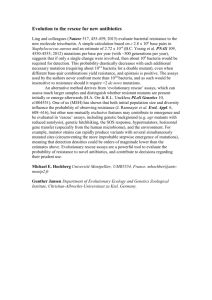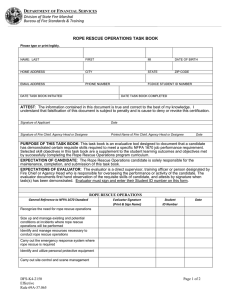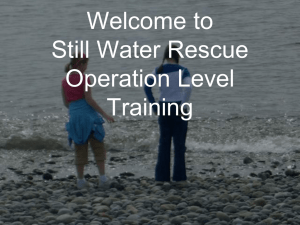Structural firefighting, search and rescue
advertisement
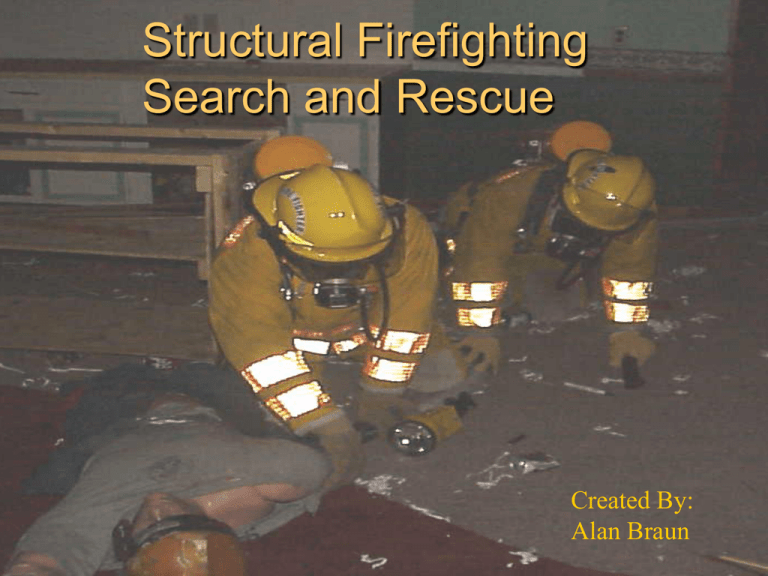
Structural Firefighting Search and Rescue Created By: Alan Braun Introduction Will learn techniques and strategies for interior search and rescue Will learn firefighter rescue and self rescue Learn tool usage Learn firefighter safety Will put these skills to a practical test Equipment Needed for Search and Rescue Full personal protective clothing Self contained breathing apparatus Radio, forcible entry tool, flashlight A Partner Hose line or a safety rope to entry/exit door Entry into a structure Get down low, check door for heat, open door and check flooring Enter Structure and perform either a right or a left and search At least once a room Yell ( Fire Department is anyone in here) Always STAY TOGETHER As Entering First person radios that team is entering and give the name of the team and the direction of search to the commander. Second person is to grab the outer boot of first rescuer and search with a tool in the other hand as far as he can reach. Third Person is to do the same as second rescuer except to hold onto the second mans outer boot During Search Always keep the team informed of what you are finding. (windows, doors, closets) Always be aware of your partner(s) Feel the walls for windows or secondary egress routes. Search all areas (Closets, under beds, Etc.) Ventilate when possible taking care not to give the fire air Small area search technique First person enters while second holds doorway. Then second enters while third holds doorway. In small areas this search can keep unneeded rescuers from all ending up in a room. Speeds up the process of the search. Large area search Technique In larger rooms you can use webbing or a short rope to keep contact with your team. You could hold hands. Using these during a search can extend your search area further into a room to get a full and accurate sweep. Finding Victim Radio command of whereabouts of the victim and status of the victim to get ems teams ready. Leave a tool or something to mark your end of search so the next team can take over. When exited explain to next team all about your search so they have your information to make their search After exiting the Building Always put your tools in a proper staging area, or put it back in its place in service. Extend your air pack straps, check it over, clean it, fill the air tank, put in back in a staging area or in its place on the truck. Go to rehab Structural collapse all call Whenever anyone finds a structural problem alert the commander of it. If the commander sees fit he will call all personnel out of the building by the use of his radio and the use of an air horn on a truck. It consists of three blasts of the air horns three times as well as a radio message to immediately egress out of the building. Summary Do the best job you can with the resources you have. Search thoroughly Take care of you and your team FIRST. Stay low and together Always use a charged line or a rope to the exit when you search. Summary (cont) Always take care of yourself and your partners. We are called to be a solution to, not to add to the problem. YOU are the most important person on any scene! Remember: practice does not make perfect. PERFECT PRACTICE MAKES PERFECT!!!


